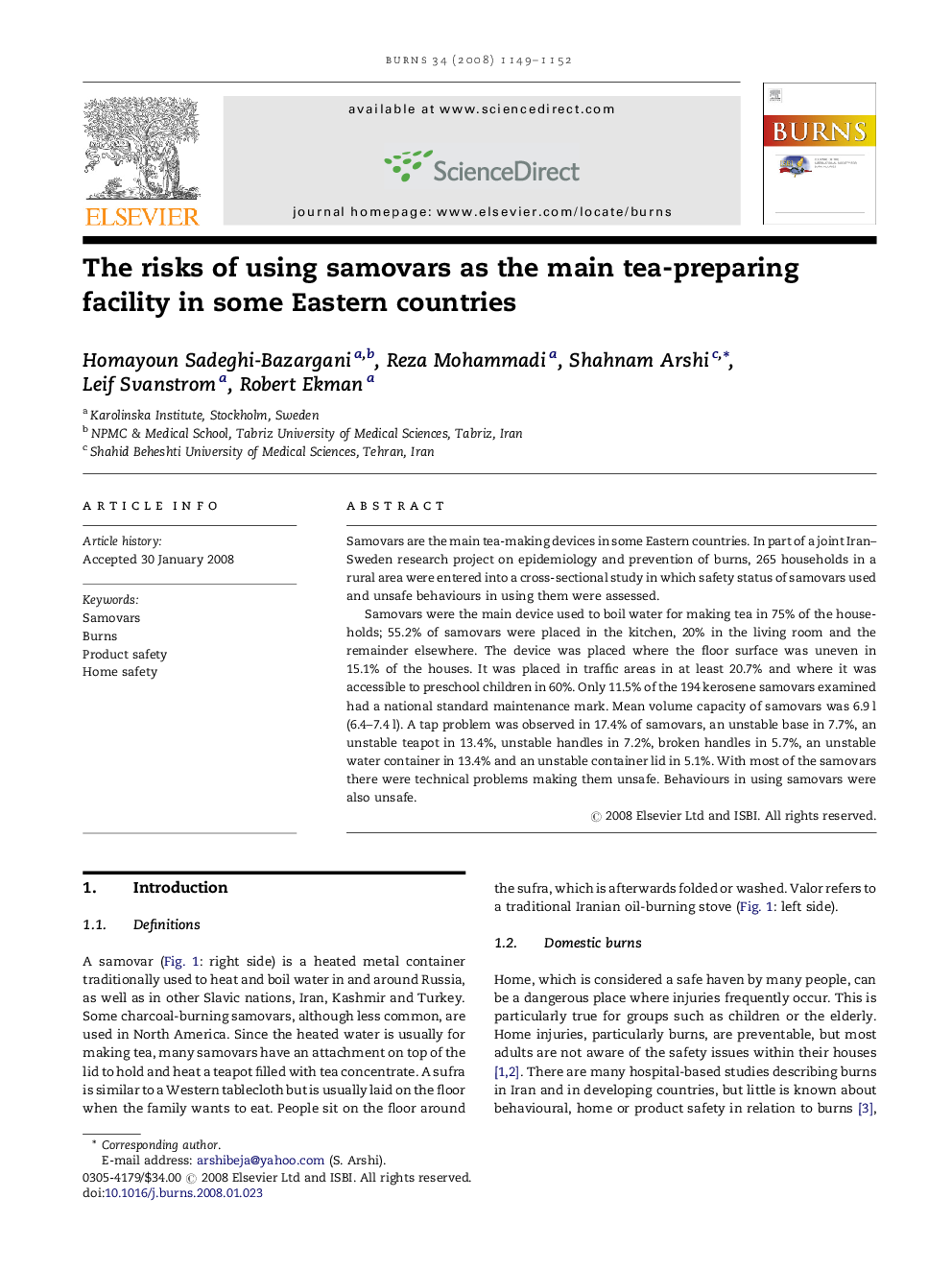| Article ID | Journal | Published Year | Pages | File Type |
|---|---|---|---|---|
| 3105726 | Burns | 2008 | 4 Pages |
Abstract
Samovars were the main device used to boil water for making tea in 75% of the households; 55.2% of samovars were placed in the kitchen, 20% in the living room and the remainder elsewhere. The device was placed where the floor surface was uneven in 15.1% of the houses. It was placed in traffic areas in at least 20.7% and where it was accessible to preschool children in 60%. Only 11.5% of the 194 kerosene samovars examined had a national standard maintenance mark. Mean volume capacity of samovars was 6.9Â l (6.4-7.4Â l). A tap problem was observed in 17.4% of samovars, an unstable base in 7.7%, an unstable teapot in 13.4%, unstable handles in 7.2%, broken handles in 5.7%, an unstable water container in 13.4% and an unstable container lid in 5.1%. With most of the samovars there were technical problems making them unsafe. Behaviours in using samovars were also unsafe.
Keywords
Related Topics
Health Sciences
Medicine and Dentistry
Critical Care and Intensive Care Medicine
Authors
Homayoun Sadeghi-Bazargani, Reza Mohammadi, Shahnam Arshi, Leif Svanstrom, Robert Ekman,
